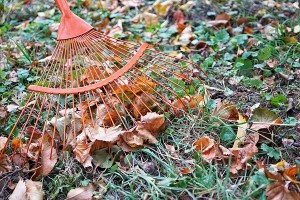Do Not Dethatch Your Winter Lawn in Arizona – Here’s Why!
As fall quickly turns into winter, the holiday season seems to be knocking on our doors quicker and quicker every year. Now that Arizona’s climate has finally cooled down to a tolerable temperature, you may be inclined to embark on your lawn dethatching project. After all, with summer’s scorching sun subdued by autumn’s cooler temperatures, the time only seems right, right? Not true! November is not the time to dethatch your Arizona lawn.

Here’s just a few of the reasons this time of year isn’t optimal for removing layers of thatch from your lawn.
Benefits of Dethatching
Dethatching is the process of removing the dead, grassy material that accumulates on top of the soil’s surface. When thatch becomes too thick and dense, your lawn’s roots may not be able to receive the nutrients and moisture necessary to maintain health, which can ultimately result in a dry, brown yard.
In short, dethatching provides the following benefits to your lawn:
- Alleviated Soil Compaction. The more compact the soil is, the harder it is for the roots of your grass to grow. Dethatching facilitates the movement of air, moisture, and fertilizer throughout your soil. This, in turn, helps keep grass healthy.
- Improved Water Penetration. Dethatching allows greater water penetration into the soil, so the roots of your grass can have access to the moisture they need. In the event of high moisture, such as rains or the occasional heavy snow in the area, dethatching provides a place for the water to go, reducing runoff.
- Deeper Roots. A healthy lawn has deep roots that are firmly planted in the ground. The deeper the roots, the more able your grass is to sustain life by grabbing and storing valuable nutrients.
Most Dethatching Should Occur in August
In the climate of Arizona, dethatching should typically be performed between June and August. During those months, lawns are growing at their most active levels, which means it they can sustain the dethatching process and recover quickly.
If you wait until September or October, the dethatching process often removes stolons, often called runners. Stolons are stems that grow just below ground or right at the soil surface. These elements are your lawn’s main way to store it’s ‘food’, so if you do too much damage in the fall when the plant is storing carbs, you’re forcing your grass to use its own energy to regrow. In other words, improper dethatching robs your lawn of its food storage. Think of it this way – it’s the middle of winter, and you’re trapped in your house for the next four months. You’re starving, so you raid the pantry. You filled your belly for the meantime, but now there’s no food to eat when spring arrives.
Your grass will feel the same way if you deprive it of its food source while it’s busy stowing away the stuff it needs to last throughout the chilly winter months.
What if You Missed the Dethatching Boat in August?
If you didn’t dethatch in time this year, mark your calendar so you can hit the ground running when summer comes to an end next year. In the meantime, you can rake your lawn lightly in the fall and winter. You can also scalp it lightly, but take care not to scalp it all the way to the dirt, as you could find yourself facing lawn damage that would be similar to late dethatching. Be careful not to be too aggressive, and your lawn will thank you with lush green blades!
At Evergreen Turf, Arizona sod is our specialty. Whether you just need a bit of sod for a small project or are looking for a full lawn renovation with sod installation, we’re here to help you make the most of your outdoor space. Take a look at our winter lawn tips, or reach out to us if you have specific questions about how to deal with your Arizona lawn.
